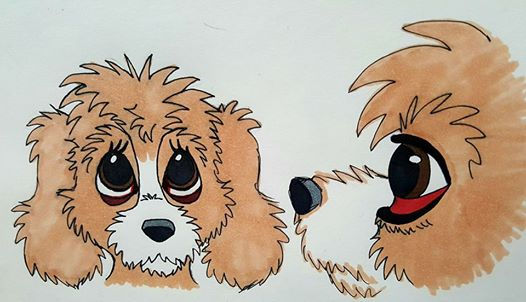Entropion and ectropion
- Ji Khalsa
- Jun 22, 2019
- 3 min read
Updated: Feb 29, 2020
Common sense disclaimer: As with everything else on this blog, it’s critical to seek the advice of a qualified veterinarian, preferably one that is board certified in theriogenology (reproductive science) for reproductive matters. This website, its blog, and its courses are NOT designed nor intended to replace the need for a qualified veterinarian, but instead to help educate people to to work optimally with their veterinarians. All recommendations should be reviewed with qualified professionals, such as a board certified reproductive veterinarian, prior to implementation in a breeding program. Always seek the advice of your veterinarian. Readers assume all risks associated with use of material on this site. More here.
This post was co-authored by Ji Khalsa and Alicia Hobson.
Entropions seem to be occurring in higher frequency so this post is from a workshop we did on Facebook in 2017 about what they are, why they are undesirable, and how to prevent them.
Both entropions and ectropions often give the eyes of a dog that “sad puppy dog” droop with red showing around the inner eyelid. Some people may think it’s “cute,” but it can be very painful and harmful to a dog.
Entropion occurs when the eyelid rolls inward, and ectropion is when the eyelid rolls outward.
Genetic predisposition
Entropion and ectropion are both genetic conditions. There haven’t been any specific genes yet identified with it, but it has been clearly established that dogs that have eye lid problems like these can breed puppies with the same problems. Also, some dogs without entropion/ectropion can still have puppies with entropion/ectropion, so dogs with a history of producing puppies with eye lid problems should be removed from the breeding pool.
Ectropion can also be caused by thyroid problems, which are also known to be heritable. Dogs who lose significant amounts of weight can also have ectropion. Unless there is an underlying genetic disease, this is not likely a heritable cause (but obviously there are other problems!).
Entropion and ectropion both usually show up by the time a dog is a year old. Breeders should be particularly aware of any puppies whose eyes don't open when the eyes of the rest of the litter open, or whose eyes don’t open by 4-5 weeks old. Dogs usually need to be treated with surgery to correct the entropion/ectropion. Unfortunately, surgical correction of ectropion can cause entropion, and vice versa.
Entropion

Entropion is a condition of the eyelid. It causes the margin of the eyelid, or part of it, to fold toward the eye. Tics of the eye, as well as mucus or pus in the outer corner of the eye, as well as redness and irritation can also often be seen. The fold allows hairs or eyelashes to rub against the eye and, at best, causes irritation, and at worst, can cause corneal perforation, corneal ulcers, or a buildup of keratin from scarring. All of these can be very painful and cause infections, reduced vision, or blindness.
Entropions are more likely to be found in dogs with brachycephaly (pushed in faces) or in dogs with excessively droopy faces, and are more prevalent in smaller dogs (such as toy breeds) but can be found in any breed. Smaller Poodles and Golden Retrievers are known to have entropion.
You can find more info on entropions here: https://vcahospitals.com/know.../eyelid-entropion-in-dogs
Ectropion

Like entropion, ectropion is a condition of the eyelid. Entropions occur when the margin of the eyelid rolls outward. The outward rolling causes the inner lining of the eyelid to be exposed. This inner portion of the eyelid is not designed to be unprotected, and exposure of it can cause problems with eye lubrication and other problems that can lead to corneal diseases. Ectropion can be very painful and cause infections, reduced vision, or blindness.
Breeds with droopy faces and loose facial skin as well as giant breeds are more prone to ectropion, but ectropion can be found in any breed.
Staining of the face caused by problems with tears and tear drainage at the inner corner of the eye are characteristic of ectropion. (Not all dogs with tear staining have ectropion, however.) Dogs with ectropion also have a problem with forge in matter getting in their eye, which causes additional risk of corneal damage. Ectropion also makes a do more predisposed to conjunctivitis (inflamed infection of the conjunctiva of the eye) caused by bacteria.
You can find more information about ectropion here: http://www.petmd.com/dog/conditions/eyes/c_dg_ectropion
Need more help?
You are not alone! Please reach out to us and we will be happy to work with you. Book with Ji or Hariamrit
Please comment below if you like this article, have anything to add, or disagree with something in it! We want to hear from you!











Every turn becomes a test of instinct, every collision becomes a work of art, and every victory becomes a display of strength among the loud cacophony of Smash Karts, igniting a rebellious fire in the heart.